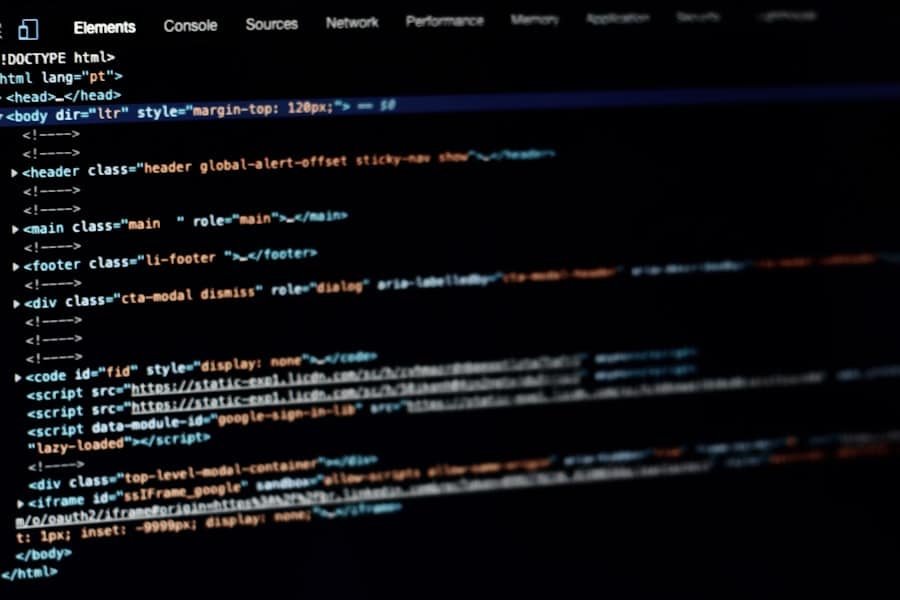Artificial Intelligence (AI) has emerged as a transformative force across various sectors, fundamentally altering the landscape of work and industry. The rapid advancements in machine learning, natural language processing, and robotics have led to the development of systems capable of performing tasks that were once the exclusive domain of human workers. This technological evolution has sparked a profound debate regarding its implications for employment, productivity, and the very nature of work itself.
As AI continues to integrate into business processes, it raises critical questions about the future of jobs, the skills required in the workforce, and the potential for economic displacement. The impact of AI on jobs is multifaceted, encompassing both opportunities and challenges. On one hand, AI has the potential to enhance productivity, streamline operations, and create new job categories that did not previously exist.
On the other hand, it poses a significant threat to traditional roles, particularly those involving routine or repetitive tasks. As industries increasingly adopt AI technologies, understanding the balance between these opposing forces becomes essential for policymakers, businesses, and workers alike. The ongoing evolution of AI necessitates a comprehensive examination of its effects on employment dynamics and the broader implications for society.
Summary
- AI is revolutionizing industries and job roles, impacting the future of work.
- Automation is on the rise, leading to potential job displacement and changes in employment.
- Traditional industries and job roles are at risk of being threatened by AI and automation.
- AI is playing a significant role in displacing human workers in various sectors.
- Adapting to the changing job landscape requires strategic planning and proactive measures.
The Rise of Automation and its Effects on Employment
The rise of automation is one of the most significant trends associated with the proliferation of AI technologies. Automation refers to the use of technology to perform tasks without human intervention, and it has been a driving force behind increased efficiency in various industries. From manufacturing to logistics, automation has enabled companies to reduce costs and improve output by replacing manual labour with machines.
For instance, in automotive manufacturing, robots are now responsible for assembling vehicles with precision and speed that far surpasses human capabilities. This shift has led to a dramatic reduction in the number of assembly line jobs available, raising concerns about job security for workers in these sectors. Moreover, the effects of automation extend beyond manufacturing.
In sectors such as retail and customer service, self-service kiosks and chatbots are increasingly handling tasks that were once performed by human employees. The introduction of automated checkout systems in supermarkets exemplifies this trend; while they enhance customer convenience and reduce operational costs for businesses, they also threaten the livelihoods of cashiers and other frontline workers. As automation continues to advance, it is likely that more job roles will be affected, leading to a significant reshaping of the employment landscape across various industries.
The Threat to Traditional Industries and Job Roles

Traditional industries are particularly vulnerable to the disruptive effects of AI and automation. Sectors such as agriculture, manufacturing, and retail have long relied on a stable workforce to perform essential tasks. However, as AI technologies become more sophisticated, many of these roles are at risk of being rendered obsolete.
For example, in agriculture, precision farming techniques powered by AI are enabling farmers to optimise crop yields while minimising labour costs. Drones equipped with AI algorithms can monitor crop health and automate irrigation systems, reducing the need for manual labourers in the field. The manufacturing sector is also experiencing significant upheaval due to AI-driven automation.
The implementation of smart factories—where machines communicate with each other and make real-time decisions—has led to increased efficiency but has simultaneously diminished the demand for low-skilled workers. As companies invest in advanced robotics and AI systems, traditional job roles such as machine operators and assembly line workers face an uncertain future. This shift not only threatens individual livelihoods but also poses broader economic challenges as entire communities that depend on these industries grapple with job losses and declining economic stability.
The Role of AI in Displacing Human Workers
AI plays a pivotal role in displacing human workers by automating tasks that were once thought to require human intelligence or dexterity. The capabilities of AI systems have expanded dramatically in recent years, allowing them to perform complex functions such as data analysis, decision-making, and even creative tasks like writing or designing. For instance, AI algorithms can analyse vast datasets to identify patterns and make predictions with remarkable accuracy—tasks that would take humans significantly longer to accomplish.
This efficiency not only enhances productivity but also raises questions about the necessity of human involvement in various job functions. The displacement of workers due to AI is not limited to low-skilled positions; even roles that require higher levels of education and expertise are at risk. In fields such as finance and law, AI-driven tools can conduct legal research or analyse financial markets more quickly than human professionals.
As these technologies continue to evolve, they may encroach upon roles traditionally considered secure from automation. The challenge lies in finding a balance between leveraging AI’s capabilities for efficiency while ensuring that human workers are not left behind in this rapidly changing landscape.
The Future of Work in the Age of AI
As we look towards the future of work in an age dominated by AI, it is clear that adaptability will be crucial for both individuals and organisations. The traditional employment model is likely to undergo significant transformation as companies increasingly embrace flexible work arrangements and remote collaboration facilitated by technology. The rise of gig economy platforms exemplifies this shift; workers are now able to engage in short-term contracts or freelance work rather than pursuing long-term employment with a single employer.
This trend may offer greater flexibility but also raises concerns about job security and benefits for workers. Moreover, the future workforce will require a new set of skills tailored to complement AI technologies rather than compete against them. Skills such as critical thinking, emotional intelligence, creativity, and complex problem-solving will become increasingly valuable as routine tasks are automated.
Educational institutions will need to adapt their curricula to prepare students for this evolving landscape by emphasising interdisciplinary learning and fostering skills that cannot be easily replicated by machines. Lifelong learning will also become essential as workers seek to upskill or reskill throughout their careers in response to changing demands.
Strategies for Adapting to the Changing Job Landscape

To navigate the challenges posed by AI-driven changes in the job market, both individuals and organisations must adopt proactive strategies for adaptation. For individuals, embracing lifelong learning is paramount; this involves seeking out opportunities for professional development through courses, workshops, or online training platforms that focus on emerging technologies and relevant skills. Networking within professional communities can also provide valuable insights into industry trends and potential job opportunities.
Organisations play a critical role in facilitating this transition by investing in employee training programmes that equip their workforce with the necessary skills to thrive alongside AI technologies. By fostering a culture of continuous learning and innovation, companies can not only enhance their competitiveness but also demonstrate a commitment to their employees’ growth and well-being. Additionally, organisations should consider implementing policies that promote job redesign—restructuring roles to focus on uniquely human skills while leveraging AI for efficiency in routine tasks.
The Ethical and Social Implications of AI-Driven Job Displacement
The ethical implications surrounding AI-driven job displacement are profound and warrant careful consideration. As machines increasingly take over tasks traditionally performed by humans, questions arise regarding fairness, equity, and accountability in the workforce. Displacement disproportionately affects vulnerable populations—those with lower levels of education or those employed in industries most susceptible to automation—potentially exacerbating existing social inequalities.
Furthermore, there is an ethical responsibility for businesses and governments to address the consequences of job displacement through policies that support affected workers. This may include retraining programmes, unemployment benefits, or initiatives aimed at creating new job opportunities in emerging sectors. The challenge lies in ensuring that the benefits of AI advancements are distributed equitably across society rather than concentrated among a select few who control these technologies.
Navigating the Challenges and Opportunities of AI in the Workplace
As we navigate the complexities introduced by AI in the workplace, it is essential to recognise both the challenges and opportunities presented by this technological revolution. While job displacement remains a pressing concern, there is also potential for innovation and growth as new industries emerge and existing ones evolve. By fostering a culture of adaptability and continuous learning among workers and organisations alike, society can harness the benefits of AI while mitigating its adverse effects on employment.
In this rapidly changing landscape, collaboration between governments, businesses, educational institutions, and workers will be crucial in shaping a future where technology complements human capabilities rather than replaces them. By prioritising ethical considerations and equitable access to opportunities, we can strive towards a future where AI serves as a tool for enhancing human potential rather than diminishing it.
The impact of AI on jobs and industries is a pressing concern for many, as highlighted in the article How AI is Threatening Jobs and Industries. As businesses navigate the changing landscape, it is crucial to also consider effective marketing strategies to stay competitive. One such strategy is blog marketing, which can help companies reach a wider audience and drive engagement. Understanding the key components of successful blog marketing can be essential for businesses looking to thrive in the digital age.
FAQs
What is AI?
AI, or artificial intelligence, refers to the simulation of human intelligence in machines that are programmed to think and act like humans. This includes tasks such as learning, problem-solving, and decision-making.
How is AI threatening jobs and industries?
AI is threatening jobs and industries by automating tasks that were previously performed by humans. This includes roles in manufacturing, customer service, transportation, and more. As AI technology continues to advance, it is expected to replace a significant number of jobs in various industries.
What are some examples of jobs and industries at risk due to AI?
Jobs at risk due to AI include roles in manufacturing, customer service, transportation, and data entry. Industries that are particularly vulnerable to AI disruption include retail, banking, healthcare, and logistics.
What are the potential consequences of AI threatening jobs and industries?
The potential consequences of AI threatening jobs and industries include widespread unemployment, economic disruption, and social inequality. It may also lead to a shift in the types of skills and qualifications that are in demand in the job market.
What are some potential solutions to mitigate the impact of AI on jobs and industries?
Potential solutions to mitigate the impact of AI on jobs and industries include retraining and upskilling workers for roles that are less susceptible to automation, implementing policies to support displaced workers, and fostering innovation in new industries that are less vulnerable to AI disruption.
